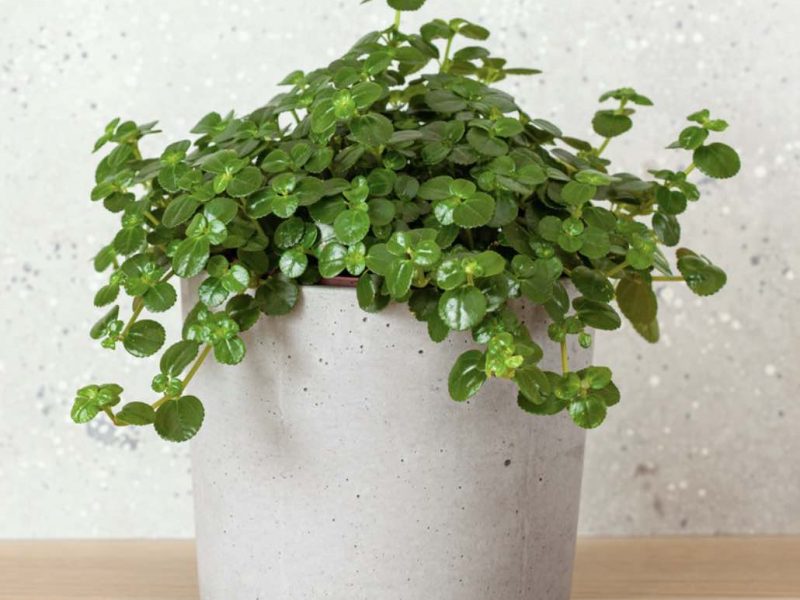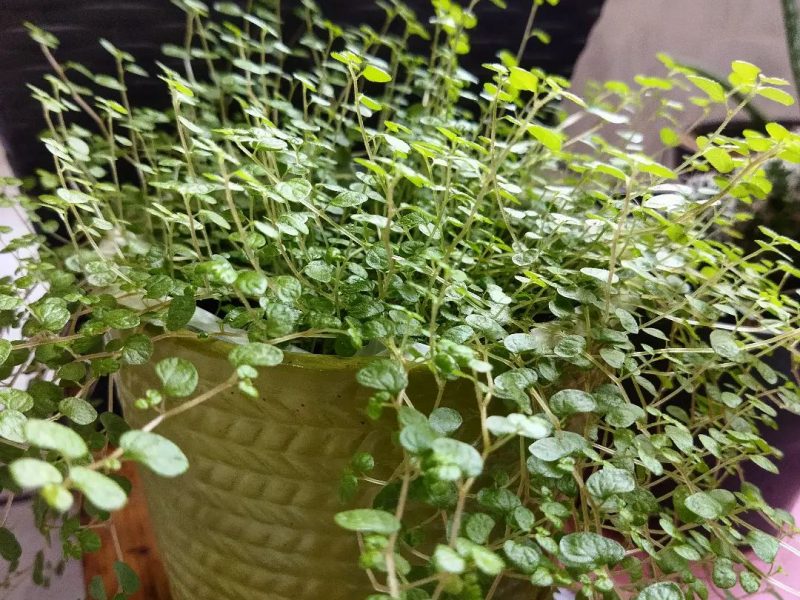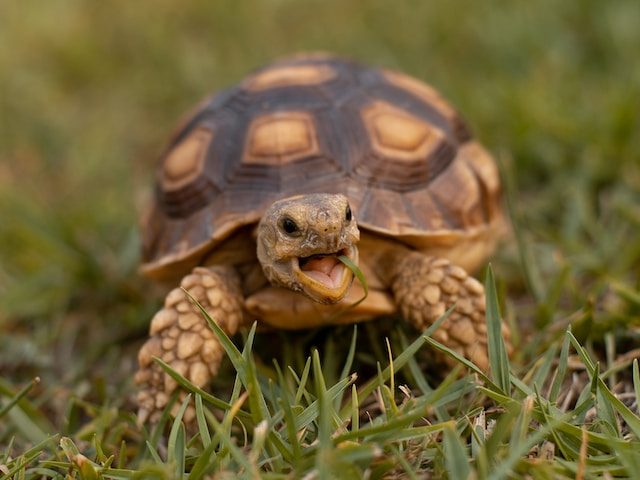Baby's Tears Plant

Also often grown outdoors, Baby’s Tears plants are great indoor potted plants for houseplant beginners as they are pretty easy to care for, are fast growers and couldn’t be simpler to propagate.
Native to western areas of the Mediterranean region, Baby’s Tears plants are small bushy plants with tiny round leaves. They are known by a large variety of common names including Mind-Your-Own-Business, Corsican Creeper, Baby Tears Plant, Angel’s Tears and Corsican Carpet and are rarely referred to by their Latin name of Soleirolia soleirolii.
In this article, we will go through everything you need to know to successfully grow and care for a Baby’s Tears plant, from basic environmental requirements to propagation methods and how to revive your plant if it’s dying.
How to Care for a Baby’s Tears Plant
There are a few main things to consider to best care for your Baby’s Tears. They can adapt to a wider range of environments compared to some fussy plant types but you’ll see the healthiest and fastest growth when things are just how they like it.
When it comes to sunlight, avoid intense direct sun rays during summer as this can very quickly dry out, scorch and burn the delicate leaves on your Baby’s Tears plant. Instead, find somewhere with bright but indirect sunlight.
A little but often watering technique is best when caring for a Baby’s Tears plant as they really don’t like their soil to become fully dried out for long periods of time. They have delicate roots, stems and leaves which doesn’t leave much space for water storage and makes them very susceptible to drying out quickly.
Below you’ll find a brief overview as well as more detailed instructions on how to care for a Baby’s Tears plant, prevent it from dying and keep it happy, healthy and thriving!
Baby’s Tears Plant Overview
Origin: Western Mediterranean
Latin Name: Soleirolia soleirolii
Common Name(s): Mind-Your-Own-Business, Corsican Creeper, Baby Tears Plant, Angel’s Tears, Corsican Carpet.
Plant Family: Nettle family
Difficulty Level: Easy
Height and Size: 4 inches tall (10 centimeters), 36 inches wide (90 centimeters)
Growth Rate: Fast
Flowering: Produce small white flowers in spring and summer.
Pruning: Only to remove dying/dead leaves or to shape your plant.
Cleaning: Use a feather duster to remove dust.
Light Requirements: Bright but indirect light.
Water Requirements: Moderate to frequent watering.
Best Soil: A standard potting mix but with additional humus or compost.
Ideal temperature: 60-80F (15-27C)
Fertilizing Routine: Apply a well-balanced fertilizer at half strength once a month during spring and summer.
Ideal Humidity Level: Over 60% humidity.
Propagation: Stem cuttings
Repotting Frequency: Once a year, in spring.
Toxicity: Non-toxic and safe for pets and humans.
Risk of Pests: Rare but risk of aphids, whiteflies and scale insects.
Common Problems: Leggy, yellow or brown foliage.
Baby’s Tears Plant Family
Part of the Nettle family, Baby’s Tears plants is a flowering plant that’s fast-growing and spreads quickly when not grown in a pot.
Baby’s Tears Plant Appearance
Compact and bushy, the Baby’s Tears plant is known for its small and delicate round leaves. If grown in a pot, it will eventually hang over it and cascade downwards to become a trailing plant. If grown on a large bed outside, they will spread evenly and quickly.
Care Difficulty Level
Although they do need tending to fairly often, the Baby’s Tears plant can still make a good plant for beginners. They grow relatively quickly and can adapt to a range of environments and homes.
Baby’s Tears Plant Height and Size
When mature, a Baby’s Tears plant can reach a height of 4 inches (10 centimeters) and a width of around 36 inches (90 centimeters). They will start to cascade down your pot if it outgrows the width.
Growth Rate of a Baby’s Tears Plant
Baby’s Tears plants are fast-growing houseplants and will grow rapidly. They will quickly become root bound and need repotting to continue healthy growth. Prune back regularly if you want to control growth.
Flowers on a Baby’s Tears Plant
As your plant matures, it can begin to grow tiny white flowers during spring and summer. However, they aren’t anything special and are quite insignificant in appearance and smell. They will wilt and die quickly.
We actually often prune these off our plant so it can focus its energy on growing new healthy leaves.
Pruning your Baby’s Tears Plant
If you spot any issues on your plant such as brown or yellow leaves, then prune these from your plant so that no energy is wasted trying to revive them. Once the foliage has discoloured, there is no way for it to return to the luscious green colour, unfortunately.
Other than pruning dead or dying leaves from your Baby’s Tears plant, you may also choose to prune your plant during spring and summer to maintain the shape and size that you want. They are fast-growing plants so may need to be pruned more regularly than your other plants.
Cleaning your Baby’s Tears Plant
Cleaning and general maintenance can be a little trickier with these plants as they have such thin, small, delicate and highly breakable leaves and stems. The best way to clean them is to use a feather duster that is soft and light and brush it over your plant.
If the leaves are dirty or the dust doesn’t go away with a feather duster, then we recommend submerging your plant in water to clean it. Don’t use running water over your plant as the water pressure can break and damage the leaves and stems but submerging it removes this danger and is a great way to keep the leaves looking and feeling fresh.
Baby's Tears (Soleirolia soleirolii)

Light Requirements for a Baby’s Tears Plant
Bright indirect light is best for your plant and they don’t do so well with bright direct light as this can damage their delicate leaves. Not only can the intense direct sunlight dry out the leaves quickly, but it can also scorch and burn your plant, causing the leaves to turn yellow. You can get away with some direct sunlight during winter though as the sun is a lot weaker but just make sure to relocate your plant in spring.
While Baby’s Tears plants can grow and survive in low light areas it’s important to note that growth will be slower and smaller. It can happen that your plant becomes leggy when growing in low-light areas which is why you’ll often see this happen in winter.
One great thing about this plant though is that they technically can survive under just artificial lighting so can be a great option for offices.
Water Requirements for a Baby’s Tears Plant
Baby’s Tears plants don’t like their potting mix to dry out so need regular watering to keep the soil moist. Cut back on watering slightly over winter but less than you would other houseplants as they don’t become fully dormant over winter and can still suffer from dried out foliage if their potting mix is dry for too long.
Best Soil for a Baby’s Tears Plant
A standard houseplant potting mix will work well for your Baby’s Tears Plant but any added humus or compost will aid growth. If growing outdoors, added manure will really help your plant.
The ideal temperature for your Baby’s Tears Plant
Baby’s Tears plants thrive in the average temperatures of your home so try to avoid extremes caused by radiators, AC vents or drafty windows. The best thing to do is invest in a digital thermometer if you don’t already have one as this will help you to spot any fluctuations early before they cause any damage to your plant.
Baby’s Tears Plant Fertilizer Requirements
Apply a well-balanced fertilizer at half the recommended strength once a month during spring and summer. It’s best to use a water-soluble fertilizer so that you can monitor and control the strength and regularity of feeding to avoid over-fertilization and yellow leaves.
Do not fertilize during fall and winter as these are the more dormant periods where you will see a lot less growth and feeding during this time can damage your plant’s health.
Ideal Humidity Level for your Baby’s Tears Plant
Another really important thing to take into account when caring for a Baby’s Tears plant is humidity. They like a high level of humidity in the air so mist regularly and invest in a humidifier to keep them happy. Ideally, you want to grow your Baby’s Tears Plant in a humidity of over 50%.
If you have a well-lit bathroom, this can be a great place for your Baby’s Tears Plant as the natural steam from showering means this is often one of the most humid rooms of your home.
@erdmanharder on Instagram

Propagating your Baby’s Tears Plant
Baby’s Tears plants actually form roots wherever stems touch soil which is why they grow so quickly. So all you need to do to propagate them is take cuttings and place them in soil. It really is that easy!
Mist and lightly water the cuttings and after a few weeks you should start to see a root system developing under the soil and new leaves may even be growing!
Repotting your Baby’s Tears Plant
As these plants are very fast-growing, they will need repotting once a year to avoid them becoming rootbound. They have quite small thin roots though so you shouldn’t need to repot any more than this.
Look out for signs that your plant is rootbound which include roots growing out of the drainage holes at the bottom, growing out of the top of the pot or your plant not producing any new growth in spring and summer. There are a few other causes of stagnant growth, however, so do check over your plant and its environment before assuming that it’s rootbound.
If you want to limit the growth of these fast-growing plants, you can stop repotting your plant and allow it to become rootbound. The level of new growth will slow and it won’t outgrow the space very fast.
Baby’s Tears Plant Toxicity to Humans and Pets
Luckily Baby’s Tears plants are completely non-toxic and pet friendly so you don’t need to worry about having them around your beloved furry friends or young children.
Treating and Preventing Pests
If your plant is growing outdoors for even some of the year, then there is an increased risk of pests. But even if it’s only growing indoors, it can happen that your Baby’s Tears Plant starts to suffer from aphids, whiteflies and scale insects.
Check over your plant regularly to help you spot any potential infestations early as this gives you the best chance of a successful treatment.
If you do spot pests, isolate your plant and thoroughly check over all other houseplants in the same room. The next step is to start a rigorous treatment of both neem oil and an insecticide to fight the infestation.
Baby’s Tears Plant Common Problems
Why is my Baby's Tears Plant dying, and how to revive it?
Watering and lighting issues are the most common causes of a dying Baby’s Tears Plant. The first thing to do to revive your dying plant is remove your plant from its pot to inspect the soil and root system and diagnose if you are underwatering or overwatering.
If your dying Baby’s Tears Plant looks leggy, then it could also be that it’s not receiving enough sunlight whereas a burnt and scorched plant can indicate too much sunlight.
For the best chance at reviving your dying Baby’s Tears Plant, act as soon as you spot the first sign of trouble as issues are much harder to solve when they have progressed quite far.
Why is my Baby's Tears plant wilting?
Baby’s Tears plants can wilt very quickly if their potting soil dries out at all. They are quite dramatic in the way in which they wilt but with a top-up of water, they should come back to life within hours. No matter how wilted or dead your Baby’s Tears plant may look, a bit of water usually gets them back to normal!
Why does my Baby's Tears plant have brown crispy leaves?
Brown dry and crispy leaves on a Baby’s Tears plant is often a result of a lack of water or humidity. We recommend that you check the soil of your Baby’s Tears plant immediately so that you know if you need to increase watering to prevent any more brown leaves from developing on your plant.
A lack of humidity can also cause your Baby’s Tears plant to turn brown as they have such small delicate leaves. The best way to increase the humidity and prevent more brown leaves from forming is to mist your plant daily and invest in a humidifier.
Unfortunately, you can’t reverse the issue of brown leaves so we recommend trimming away the worst affected areas of your Baby’s Tears plant so that all energy can be focused on new healthy foliage.
Why does my Baby's Tears plant have yellow leaves?
If the leaves on your Baby’s Tears plant are turning yellow then this is often a sign of overwatering. Baby’s Tears plants need a lot of water but if they aren’t getting enough light, they won’t require as much which can lead to waterlogged soil and root rot. Replace the soil if still waterlogged and trim away the yellow leaves so your plant can focus on new healthy growth.
Why is my Baby's Tears plant losing leaves?
The most common reason why Baby’s Tears plants lose their leaves is improper watering habits. This can be both over and underwatering. The reason for this is once the root system is damaged, your plant won’t get the nutrients and oxygen it needs to thrive and will need to shed some of its leaves.
It’s important that you diagnose the issue of leaf drop correctly as you don’t want to water and overwatered Baby’s Tears plant more and vice versa as this will just cause more leaves to fall from your plant. You’ll need to check the moisture levels in the potting mix immediately and adjust your watering habits accordingly to prevent your Baby’s Tears plant from losing any more leaves.
Why is my Baby's Tears plant drooping?
If you notice that your Baby’s Tears plant has started to droop, then this commonly means it needs more water. Drooping is luckily an early sign of unhappiness so if you can’t see any other issue with your plant then it should be fairly simple to bring your plant back to full health.
Check the soil to confirm that your Baby’s Tears plant is being underwatered and slowly reintroduce water to your plant. Be careful not to drown your Baby’s Tears plant as this can cause them to go into shock. Instead, water your plant once a day for a week and this should make your Baby’s Tears plant less droopy.














